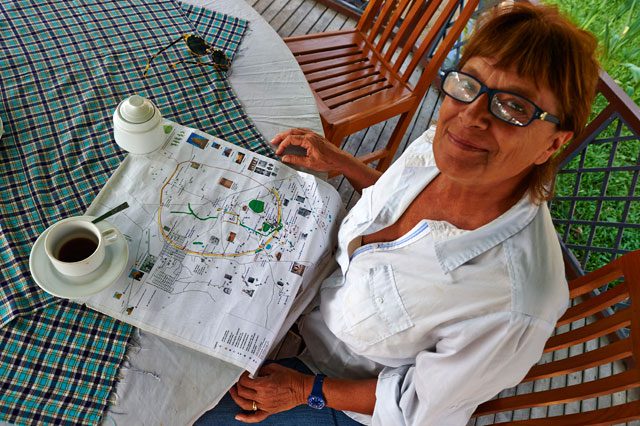Famed archaeologist Patrizia Zolese has already saved ancient sites in Laos and Vietnam. Now she is turning her attention to one of Myanmar’s greatest lost civilisations
By Massimo Morello Photography by Andrea Pistolesi
Essentially, my job can be summed up in two words: archeo logos,” says Patrizia Zolese, before lighting a cigarette, clearly satisfied with the definition.
Archeo means ‘ancient’ in Greek. Logos means ‘story’, but also ‘reason’. And that is exactly what Zolese does. She reasons a lot and tells great stories. Her stories come one after the other, like the cigarettes she chain-smokes. They are windows to lost cities, and that is why she has been dubbed the ‘Italian Indiana Jones’. When in the field, though, she sports a bandana rather than a hat.

Dr Patrizia Zolese, archaeologist, is head of Asian archaeology and culture at the Lerici Foundation (a research centre for new, non-invasive methods of investigation into the safeguarding of cultural heritage), Unesco consultant for the Asia-Pacific area, and expert in Oriental architecture at Milan Politecnico. She spends six months of the year in Italy and the rest in the field: splitting her time between Vat Phu in southern Laos, which has been called ‘the cradle of Khmer civilisation’; My Son on the central coast of Vietnam, one of the most important centres of the ancient kingdom of Champa; and Srikshetra in the central region of Myanmar, the former capital of the kingdom of Pyu. “One of the greatest civilisations in Southeast Asia,” as she puts it. “One of those populations that changes things.”
Vat Phu and My Son have been added to the list of Unesco World Heritage Sites, largely thanks to work done by the archaeological missions headed by Zolese. Vat Phu has since become one of the biggest tourist attractions in Laos, but Zolese remembers that when she arrived in 1990 there was no electricity and no roads: “I lived in a hut on the Mekong with a French colleague. I said to her: ‘What are we doing alone here like two mad women?’”

Zolese’s introduction to My Son was more emotional. She remembers a Unesco officer telling her: “Go and see. But look at the ruins, not the monuments.” Zolese was immediately confronted with the wreckage left by bombing during the Vietnam War. “As a human being, I feel offended by the destruction of masterpieces of human art,” she says. The result of that offence has become the discovery of My Son by the Vietnamese, who visit the site in growing numbers every day. Now Zolese is hoping to achieve the same results in Pyay, the Myanmar city around which the Pyu civilisation developed between the 5th and 9th centuries. She won’t be pinned down on the timing but hopes that “consecration” from Unesco will come within the next two years.
Work began in 2002 with an Italian Foreign Ministry programme to train regional civil servants – including those working at the more famous site of Bagan – in conservation themes, digging methods, heritage management and museology, which are some of the focal points of Zolese’s work.
See also: Under the radar – The team of researchers who unearthed Phnom Kulen’s so-called ‘lost city’ tell the real story of how laser imaging revealed its 1,200-year-old remains
Game, set and trap – Camera traps are crucial tools for better understanding the composition and populations of wildlife in the region. They also tell us what is being lost

